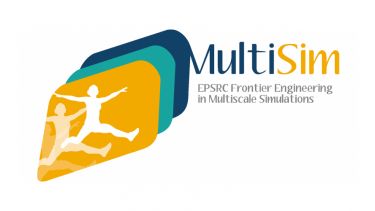MultiSim services and resources
These are all the data, service, and software resources that are made available to the researchers involved in the MultiSim project.
Data repository
All open access data shared by the MultiSIM consortium are available as a FigShare Collection.
Simulation services
A number of technologies for the subjects-specific modelling of the musculoskeletal system are being developed as part of the MultiSIM project. These are listed here below; if the service name is linked, the service is available through a web interface.
CT2S: Stochastic Finite element Analysis of subject-specific model generated from CT data, to predict the femoral strength under side-fall conditions. The minimum side-fall strength was found to be an excellent predictor of the risk of hip fracture in fragile elders, significantly better than the current standard of care. For a recent review of this and other clinical services please see (Viceconti M et al., 2018).
XCT2FE: this service computes the stiffness and strength of a small portion of distal radius or distal tibia examined with High-Resolution peripheral Quantitative Computed Tomography (HRpQCT). It can be used in clinical research to derive more reliable functional endpoints from HRpQCT images.
BoneDVC: this is services for biomechanics research. It exposes as an on-line service the Digital Volume Correlation (DVC) algorithm described here (Dall’Ara E et al., 2014). This tool allows researchers who have multiple microCT taken to a specimen of bone tissue in its unloaded and loaded configurations to compute with high accuracy the displacement field induced by such compression, which once differentiated provides a full-field quantification of the mechanical strains at the tissue spatial resolution.
ARF0 / ARF10: this is a multiscale model that predicts the absolute risk of hip fracture at time zero (ARF0) or in the following ten years (ARF10) computed considering the risk of falling, the attenuation of the floor / clothing / soft tissue, and the inherent strength of the femur as predicted from CT data. Currently the ARF0 model is being used as population tool, where using the Sheffield Cohort as reference (see Viceconti M et al., 2018), one can explore the effect of various clinical, environmental, or behavioural factors on the risk of hip fracture.
Software tools
MAF: the Multimod Application Framework was an open source software framework for the rapid development of biomedical applications. MAF is not under development anymore, but some important tools listed below are based on this historical framework.
NMSBuilder: this is a pre-processing software tool to generate musculoskeletal dynamics models. The application is based on the MAF2 framework, and it is maintained by Fulvia Taddei group at the Rizzoli institute in Bologna.
BuilderM2O: Builder Mark II Organ (M2O) is a pre-processing software tool to generate organ-scale finite element models. The application is based on the MAF2 framework, and it is maintained by the Insigneo institute.
MicroFE: this is a Cartesian Mesh generator from microCT data, originally developed in Matlab by Yuan Chen and Marco Viceconti as part of Dr Chen PhD thesis. The verification of models generated with this code is reported in (Chen Y et al., 2014). Their validation against DVC measurements is reported here (Chen Y et al. 2017). The code is available in Open Source licensed under the Apache License, Version 2.0.

MultiSim Project
Aiming to create a new generation of predictive models capable of handling complex multi-scale and multiphysics problems, characterised by uncertain and incomplete information.
